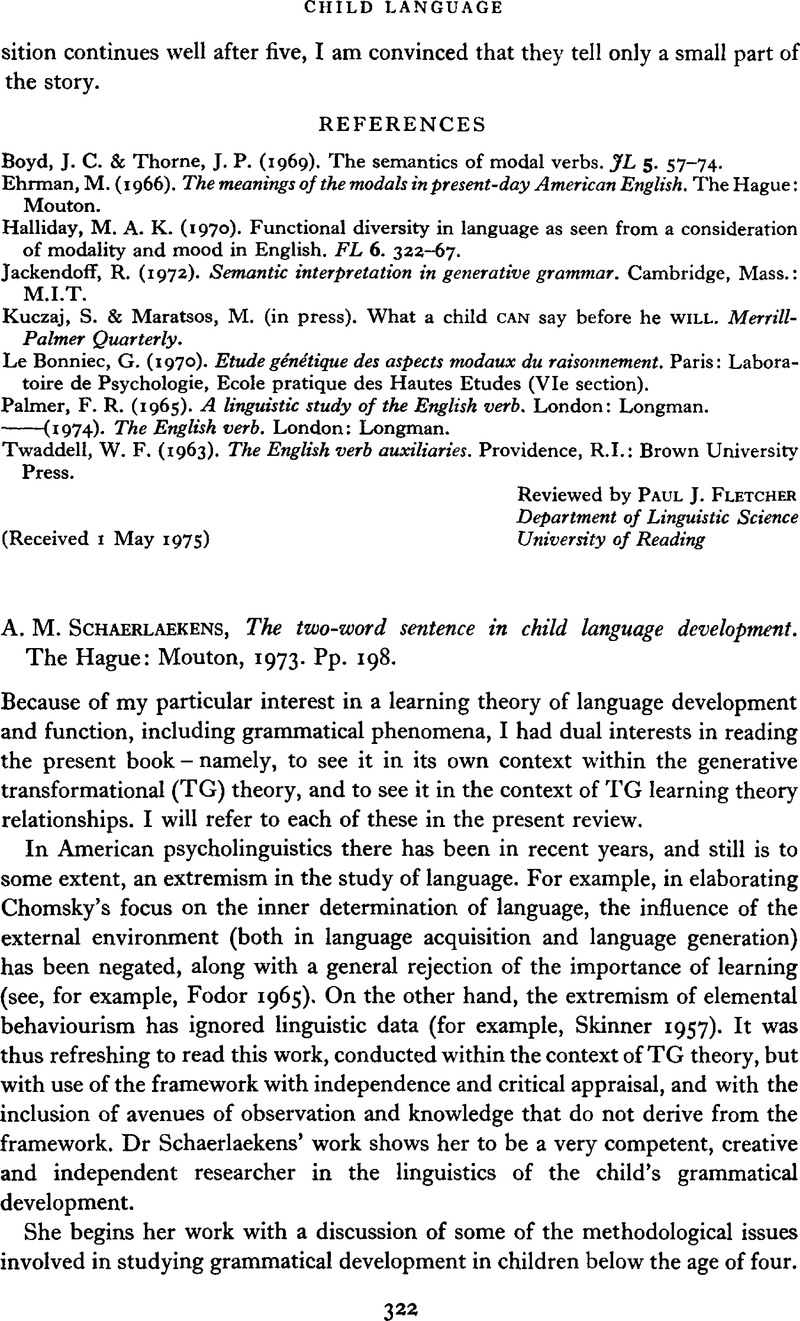No CrossRef data available.
Article contents
Published online by Cambridge University Press: 26 September 2008
Abstract
An abstract is not available for this content so a preview has been provided. Please use the Get access link above for information on how to access this content.

- Type
- Reviews
- Information
- Copyright
- Copyright © Cambridge University Press 1975
References
REFERENCES
Osgood, C. E. (1953). Method and theory in experimental psychology. New York: Oxford University Press.Google Scholar
Staats, A. W. (1968). Learning, language, and cognition. New York: Holt, Rinehart & Winston.Google Scholar
Staats, A. W. (1971 a). Linguistic-mentalistic theory versus an explanatory S-R learning theory of language development. In Slobin, D. I. (ed.), The ontogenesis of grammar. New York: Academic Press.Google Scholar
Staats, A. W. (1971 b). Child learning, intelligence, and personality. New York: Harper & Row.Google Scholar
Staats, A. W. (1974). Behaviorism and cognitive theory in the study of language: neopsycholinguistics. In Schiefelbusch, R. L. & Lloyd, L. L. (eds), Language perspectives: acquisition, retardation, and intervention. Baltimore: University Park Press.Google Scholar




